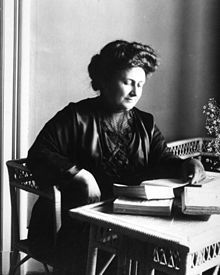Happy Teacher Appreciation Week!
It doesn’t matter how long we have taught – there will always be moments that stay with us forever. Below is one of the moments that has stayed with me.

I wanted to scream! They were tugging at me all day. “Ms. Ellington, Ms. Ellington!” is all I could hear them say. Don’t get me wrong. I didn’t mind the tugging although it could be tedious at times. I just wished at some point some of the children would learn to raise their hand to get my attention. I know, I know… it’s hard for five-year olds to remember, especially when they need something. Besides, kindergarten children are like a “garden of flowers” and we all know flowers need tending.
Young children live in a world of ego. On this particular day, ego had overtaken our classroom and was increasingly trying. Riley soiled his pants. Jenny fell and scraped her knee. Kevin’s mom and dad argued while driving him to school – leaving him crying for home all morning. So many things to tend to and I still had to teach at some point.
To make matters worse, the art activity I planned for the children was harder than I thought. So there I was, running from child to child trying to help each complete their project. There they were, twenty little budding flowers all in need of nurturing at the same time.
As I frantically tried to attend to everyone, my thoughts flashed back to a Swedish friend named Heli who worked at a restaurant I sang at in my “singing” days. Heli was always smiling and pleasing everyone. One night patrons and coworkers were running her ragged. She looked at me and in her stealthy Swedish accent said, “If I hear my name one more time, I’m going to hit the ceiling!”
My thoughts of Heli were broken when Katey and Brittany at once yanked at my sleeve. “Ms. Ellington, Ms. Ellington!” they shouted. Hmm… Again I thought of Heli and looked at their faces. With hands on hips and one raised eyebrow I said, “If I hear Ms. Ellington one more time I’m going to hit the ceiling!”
The room fell silent and I could see some of my little ones, mouths open in awe, slump in their chairs like wilted flowers in need of a drink. It was an awkward moment, eyes meeting eyes and nothing to say. For that moment, the weight of my day subsided and I was able to catch my breath though regrettably, it now seemed hard for the children to catch theirs.
Then, as if in slow motion from the back of the room, Joanna tip-toed quietly to me. She approached, face aglow. In front of me, she deliberately placed her hands on her hips, raised one eyebrow, and with a missing front toothed grin said, “Oh, Ms. Ellington!”
We all burst into laughter and the moment of peace I thought I experienced gave way to a renewed sense of enthusiasm at being with these lively children.
These days, when I am caught up in classroom stress, I still see Joanna standing before me with that missing front toothed grin.
This is a good time to reflect on positive teaching memories. I look forward to hearing about yours! Thanks in advance for leaving a reply and sharing!



















